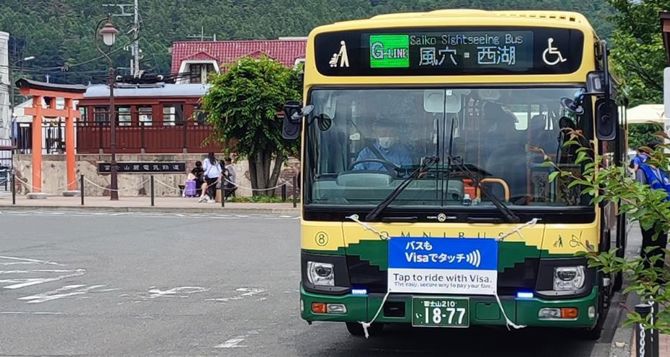Following Euromonitor International’s first article on cross-border transaction development in Asia Pacific, this second piece explains the latest developments in the region that can help support demand for travel, remittances and e-commerce, as well as identifying the challenges ahead.
Contactless card payment
Global card operators have already established an international network, partnering with global/regional incumbent banks and acquiring merchants for payment. In addition, Visa and Mastercard are continuously building partnerships with local banks, digital challenger banks, digital wallets, and BNPLs, to enable them to issue cards and facilitate cross-border payment.
For example, Visa and Mastercard have partnered with several local banks in Thailand to launch pre-paid cards (such as Krungthai Bank’s Krungthai Travel Card). Travel cards offer features such as pre-exchange on several different foreign currencies, and enabling payments in foreign currency. The approach allows global card operators to gain greater traction in developing countries, thereby promoting card adoption.
Furthermore, Visa and Mastercard have also been continuously promoting contactless payment at public transport and convenience stores, as they look to replicate their success from Western markets in Asia Pacific. In Japan, there are multiple transport pre-paid cards (such as Suica) operated by different subsidiaries of Japan Railways Group, which can often confuse travellers.
Moreover, public transport operator Nankai Electric Railway Co. has partnered with Sumitomo Mitsui Card, to promote Visa contactless payment. Similarly, Causeway Link (a Malaysian operator running buses between Malaysia and Singapore) launched Visa contactless payment in 2022.
Visa contactless payment at Kawaguchiko near Mount Fuji, Japan
Source: Euromonitor International
Cross-border QR payment
Despite the significant convenience of global cards, their users still have difficulties paying at overseas SME merchants without POS terminals. Digital wallet users also face challenges, if these products do not have licences to operate in destination countries, or if the national QR standards of the origin and destination markets are not compatible.
Following Chinese tourists, Ant Group and China UnionPay have established cross-border QR payment networks for key regions such as Asia Pacific, Western and Eastern Europe. Ant Group has been promoting AliPay+ to investees (such as Touch ‘n Go), enabling users to make overseas payment like locals. Similarly, backed by bank partners on cards, including Livi Bank, China UnionPay has also been extending its number of partnerships to cross-border QR payments. Furthermore, in July 2023, China UnionPay signed an MOU with National Bank of Cambodia on cross-border QR payment.
In India, Unified Payment Interface (UPI), backed by National Payment Corporation of India (NPCI), is playing a prominent role in making cross-border transactions more accessible and secure for foreign tourists visiting the country, as well as Indians travelling overseas. Since February 2023, RBI has allowed foreign tourists from G20 countries to use UPI. Similarly, PhonePe integrated UPI International in February 2023, allowing Indian travellers to scan overseas PhonePe merchants’ QR codes and pay through UPI in the local currency, including in Bhutan, Nepal and Singapore.
Southeast Asia’s central banks pushing interoperability of national QR standards
Current cross-border QR payment development has been led by companies such as Ant Group and NPCI. With growing commercial interest, there will likely be multiple QR systems for merchants to adopt in the coming years. To relieve the expense burden of merchants, central banks in Southeast Asia are driving interoperability of national QR standards. With advantage in local QR standardisation, Thailand, Malaysia, Singapore and Indonesia lead progress, while the likes of the Philippines, Vietnam and Cambodia are expected to catch up.
Cross-border instant transfer
In 2021, Singapore and Thailand rolled out the world’s first linkage of instant payment systems, between PayNow and PromptPay (Source: Monetary Authority of Singapore). In addition, Singapore and India launched the instant payment linkage between the former’s PayNow and the latter’s Unified Payments Interface (UPI) in February 2023. It is projected that the cross-border instant payment collaboration within Asia Pacific, as well as within the EU, will be enhanced, due to the collaboration between central banks.
Challenges ahead
Although there is significant potential for cross-border transactions, challenges are present in the form of increasing cross-border scams, overseas merchant acquisition, and retaining customer engagement. Criminal syndicates have turned their focus from domestic to overseas scams for cross-border transactions, given the challenges of policing cross-border investigations. In addition, overseas merchant acquisition is still a costly investment for payment institutions, especially local payment systems, such as GPN in Indonesia, or RuPay in India.
Lastly, consumers are increasingly demanding transparency and leveraging financial product comparison websites to search for acquisition offers, miles and cashback. As such, financial institutions cannot only rely on internal staff, but must also engage research agencies for market intelligence, to help guide strategic planning.
Read our relevant strategy briefing on loyalty, Next-Generation Customer Loyalty, for insights on Web 3.0 loyalty disruptor, and decentralised loyalty ecosystems.


